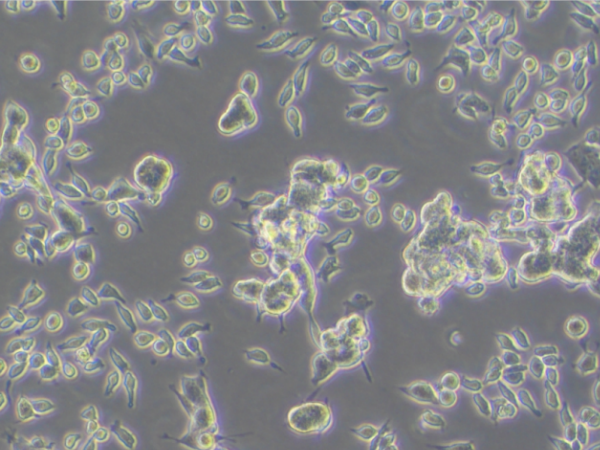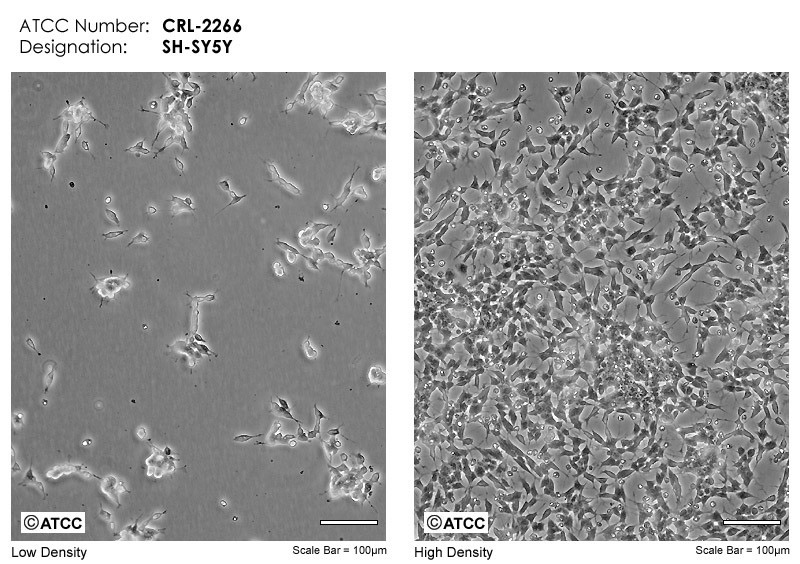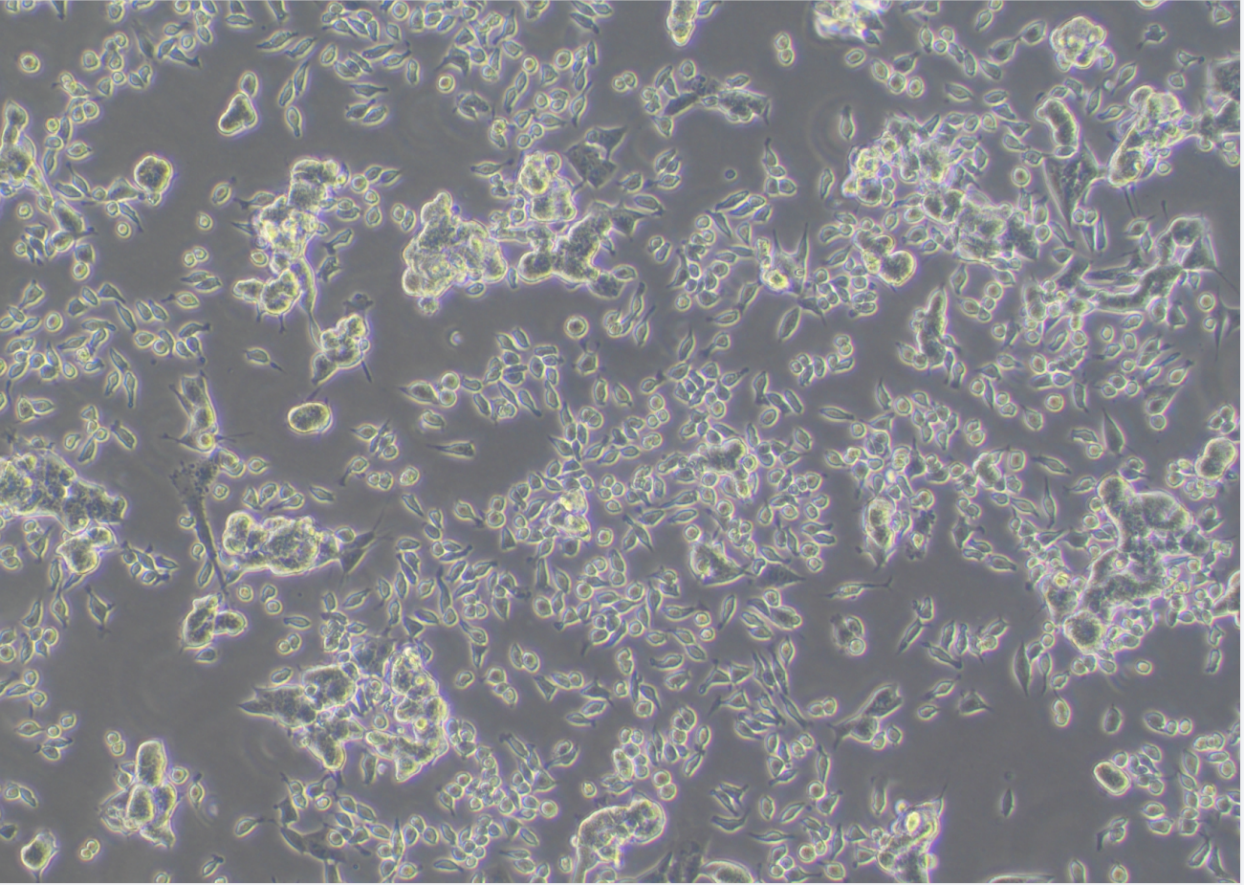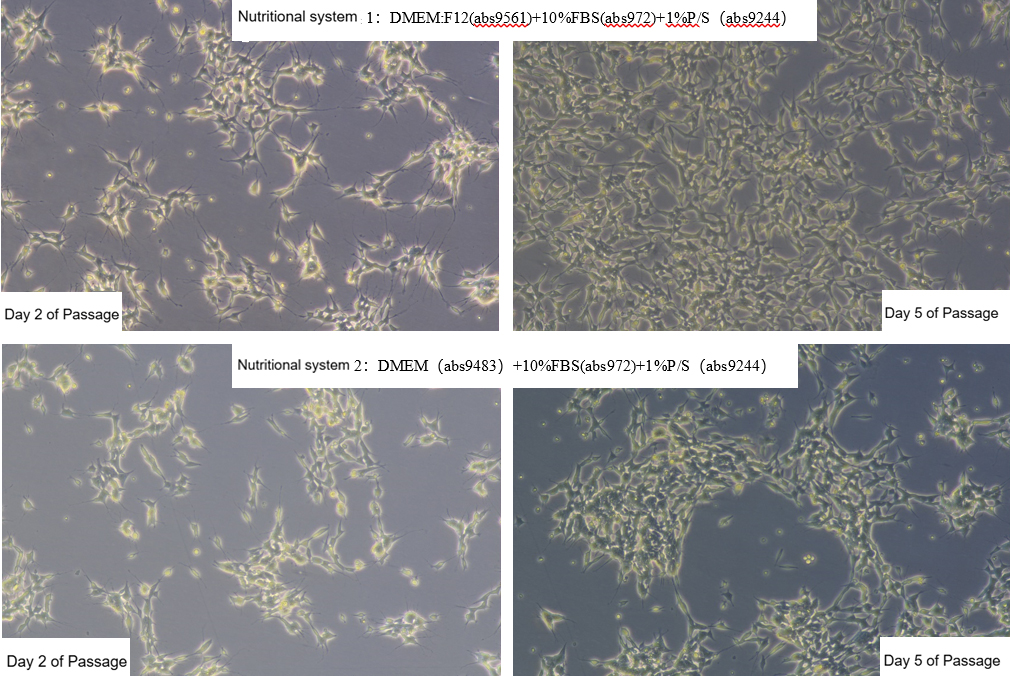SH-SY5Y Cell Culture Guide

Human neuroblastoma cells (SH-SY5Y) were derived from the SK-N-SH cell line, which was established from a metastatic osteosarcoma in 1970, through three rounds of cloning (SK-N-SH → SH-SY → SH-SY5 → SH-SY5Y). These cells can reach a density as high as 106 cells/cm2 and exhibit moderate activity of dopamine β-hydroxylase. Morphologically, they are predominantly epithelial-like, with most cells adhering to the surface and a minority in suspension; Nutrient system: Recommended DMEM:F12 + 10% FBS + 1% P/S.
Table 1 Basic Information of SH-SY5Y Cells
|
SH-SY5Y (Human Neuroblastoma Cells) |
|
|
Morphology |
Epithelial-like |
|
Growth Characteristics |
Mostly adherent, with a minority in suspension |
|
Nutrient System |
DMEM:F12 (abs9561) + 10% FBS (abs972) + 1% P/S (abs9244) |

Figure 1 SH-SY5Y (Human Neuroblastoma Cells)
Firstly, we discuss whether it is normal for SH-SY5Y cells to be passaged every five days. SH-SY5Y cells proliferate slowly and tend to grow in clusters. Under the microscope, the confluence appears low, but the actual density of cell clusters is high. It takes 5-7 days to reach a confluence of over 80%, so passaging every 5-7 days is normal (as shown in Figure 2, with a confluence of approximately 70% for SH-SY5Y). If cells cannot be passaged after a week of culture, it is recommended to digest the cells and reseed them into smaller culture dishes to increase cell density and promote growth.
Next, we address the issue of whether it is normal for SH-SY5Y cells to have a large number of suspended cells. The growth characteristics of SH-SY5Y cells are predominantly adherent with an epithelial-like morphology, short protrusions, and a tendency to grow in clusters. A minority of cells are in suspension, appearing round and shiny. If a large number of suspended cells are observed, this is not normal (as shown in Figure 3, with a majority of suspended cells in SH-SY5Y).

Figure 2 SH-SY5Y with a Majority of Suspended Cells
How can this issue be resolved? If the adherent cells are in good condition with an appropriate density, the suspended cells can be discarded. If there are few adherent cells, digest the cells with trypsin, centrifuge, and resuspend the cells in fresh complete medium before reseeding into culture flasks. Observe periodically to see if the cells adhere.
Finally, we discuss the differences in morphology of SH-SY5Y cells cultured in different nutrient systems. We compared the morphology of SH-SY5Y cells cultured in two different nutrient systems. System 1 is DMEM:F12 + 10% FBS + 1% P/S, and System 2 is DMEM + 10% FBS + 1% P/S (as shown in Figure 3). Morphological comparisons were made on Day 2 and Day 5 of culture. On Day 2 after passage, at low density, there was no significant difference in the morphology of SH-SY5Y cells cultured in the two nutrient systems. Both had a minority of suspended cells, with most cells being epithelial-like, having short protrusions, and tending to grow in clusters. On Day 5, SH-SY5Y cells cultured in System 2 exhibited excessive clustering, with cells adhering tightly together and cell outlines being difficult to distinguish. In contrast, cells cultured in System 1 had slight clustering (which is characteristic of SH-SY5Y cells) and normal morphology. System 1 is more suitable for cell proliferation.

Figure 3 Comparison of SH-SY5Y Cell Morphology Cultured in Two Nutrient Systems (The serum batch numbers used in both nutrient systems were consistent)
Note: Images are sourced from the internet and customers for reference and educational purposes only.
AntBio provides antibodies, proteins, ELISA kits, cell culture, detection kits, and other research reagents. If you have any product needs, please contact us




